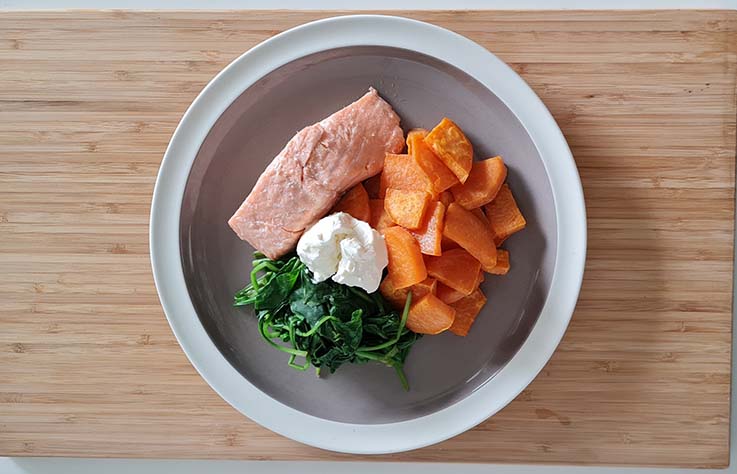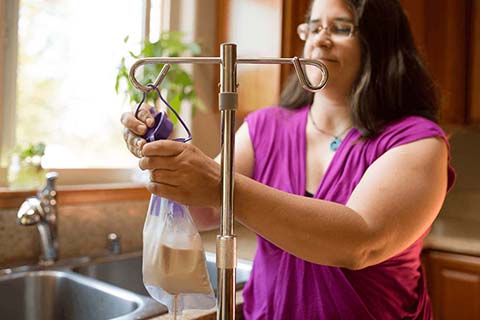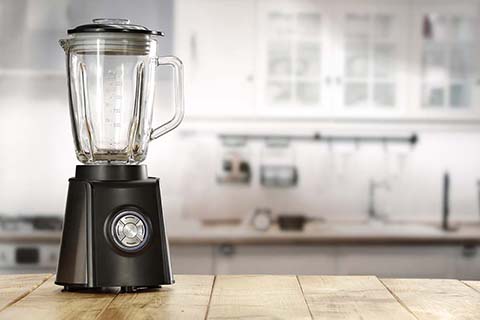Together We Blend: Blended Diet Experiences
The Talking Tube Feeding Team caught up with two parents about their journeys with blended diets – the highs, lows, challenges and rewards. Read on to meet our families as each mum shares her story and top tips. A must-read for anyone considering blended diet tube feeding!
Contributing families: Caris (mum of 3-year-old Elsie) and Sumerah (mum of 11-year-old Shahzaib)
Caris & Elsie
A blended diet is a very good option if you are struggling.
– Caris
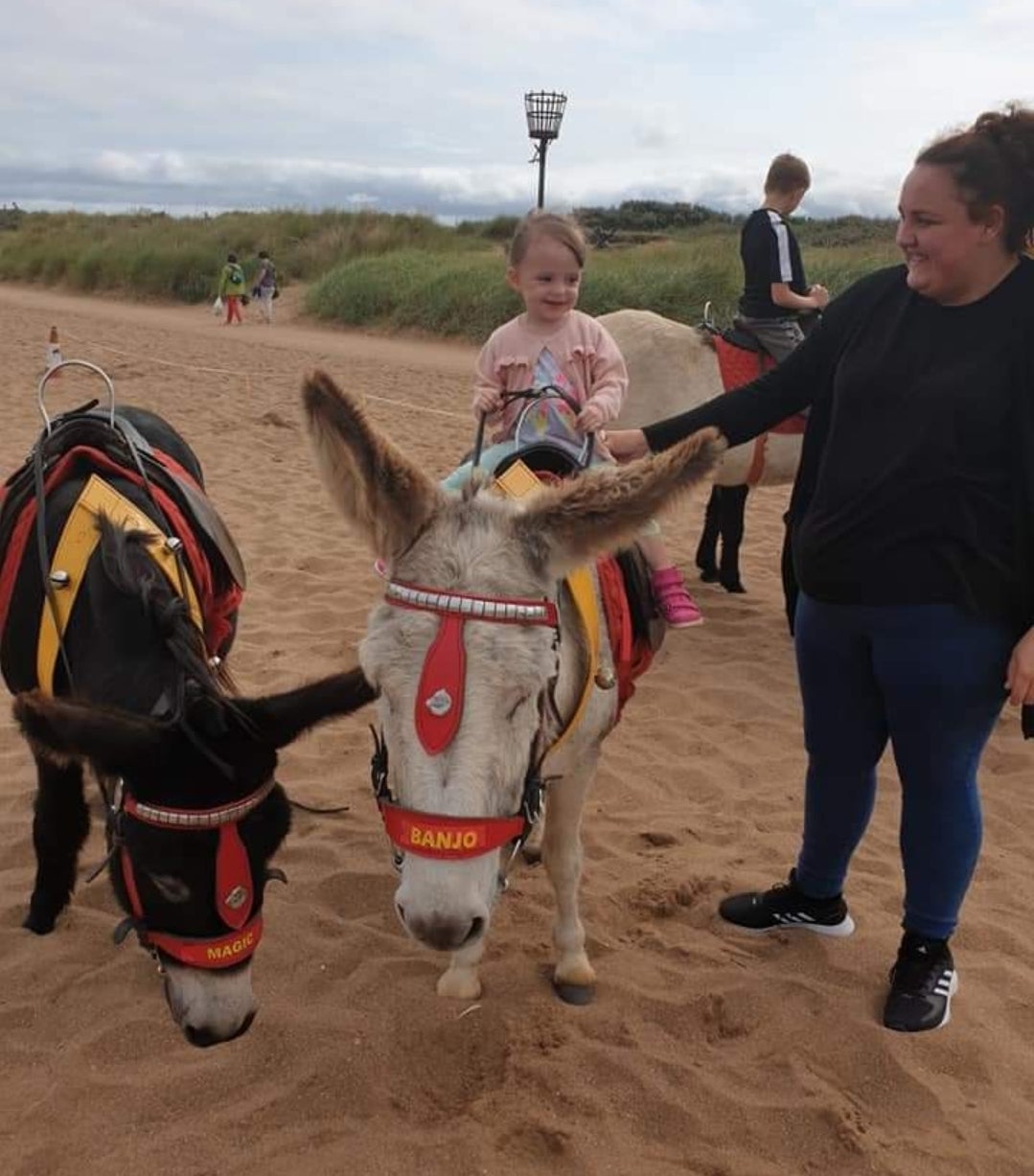
Background:
After discovering Elsie’s inability to tolerate the formula feeds that she was prescribed, Caris turned to a blended diet. A blended diet approach works best for Elsie by offering a higher calorie intake with more variations in the diet.
Elsie has been on a blended diet for just over a year, although on and off while trialling other formula feeds alongside. The last three to four months took an optimistic turn as Elsie has successfully transitioned to a full blended diet without any formula inclusion and found her symptoms of intolerance improved. Caris finds that this approach works best for her daughter as it gives them the flexibility to change the recipes and ingredients for each feed, which was not a viable option for Elsie while on a formula feed.
Top tips from Caris:
Tip 1: Don’t over-think it
Many children will go through various feeding routines until they find the right method for them, so (if you can) it’s worth trying out a blended diet. Just try not to over-think it – everything is trial and error with tube feeding. If it works then brilliant, but if it doesn’t then you can try the next option. Your dietitian and healthcare team will always be there to help.
Tip 2: Calories, calories and more calories
Ensure that your blended recipes are nutritious with high calorie ingredients. For example, Caris uses coconut cream, oils and dried fruits. But, if you’re sending any blends to school, check whether their kitchen operates as a nut free zone to keep everyone safe. Elsie loves chocolate and vanilla mousse pots for a quick snack – these desserts are filled with nearly 400 calories per pot and can be found in the children’s section of a supermarket.
Tip 3: Freezer space
As Elsie has around six blends a day, I prepare her blends in advance. I do this on a weekly basis and make enough to last a full week. This means I need a large amount of freezer space, so I recommend anyone trialling a blended diet has enough storage space for both the blends and any frozen ingredients needed to make them.
Sumerah & Shahzaib
It’s hard and time consuming but each child is different. You’ve got kids who can eat by
mouth, kids who can’t, it’s different for every child.
– Sumerah
Background:
Sumerah’s son, Shahzaib, was only on a blended diet for four weeks until making a switch back to a full formula approach. Despite Shahzaib being able to tolerate the blended feed, Sumerah found that her biggest challenge stemmed from the timely preparation process that a blended diet required.
From counting calories and including the right nutrients, to finding the right balance of salts and spices and then blending the food, there was a lot to think about. Sumerah is also a busy mum – responsible for looking after Shahzaib and his complex medical needs, taking care of Shahzaib’s brother and managing house errands. As a result, Sumerah found it challenging to find enough time to prepare blends continuously.
Shahzaib is currently on a continuous pump, with formula feed administered in two cycles (daytime: 8am – 6pm, and night time: 8pm – 6am). For this reason, Sumerah prefers a formula approach because it’s easier to manage and it gives her the confidence that Shahzaib is receiving the nutrients and calories he needs for growth and maintenance.
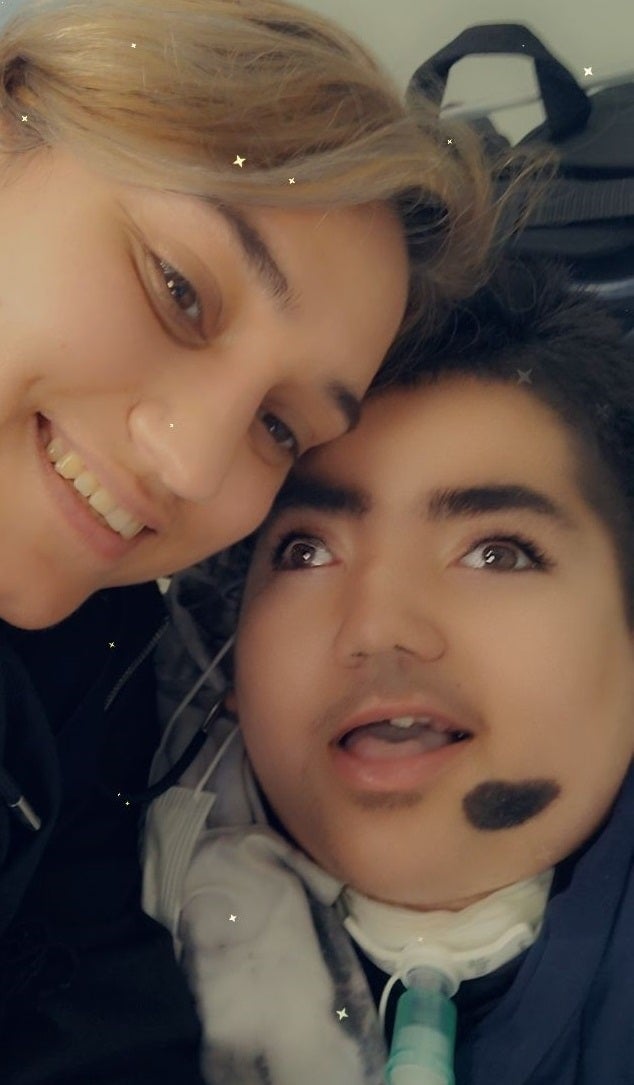
Top tips from Sumerah:
Tip 1: Try it out
After I gave Shahzaib some cranberry juice to help with his urinary tract infection (UTI), I started thinking about blended diets. I spoke to our dietitian to see if it was okay for Shahzaib to try it and then together we gave it a go. I was keen to see how I could incorporate real food into his diet and whether it’d work for us as a family. Even though ultimately it wasn’t right long-term, I wouldn’t have known if I hadn’t given it a go.
Tip 2: Be realistic with your time and dietary requirements
I’d advise any parent who is considering giving their child a blended diet to understand that it’s a very time-consuming method. Think about whether you realistically have enough time in the day to prepare the blends, on top of everything else on your list, like caring for your child’s needs and managing a household. As a mum, it’s so easy to put yourself second, but it’s no good if you’re tired, so you must look after yourself too. I also found it difficult to buy halal foods that could be blended and affordably, so I’d recommend other families do some research before starting out.
Tip 3: Every child & family is different
Blended diets might not work for some families, like ours, but this doesn’t mean they won’t work for everyone. Each child will have their own feeding plan that matches their individual needs, but it’s also important that the way you choose to tube-feed also fits in with what works best for you as a family.
Would you like to share your blended diet experience with us? Send an email to talkingtubefeeding@uk.nestle.com.
The views above are personal experiences from parents of tube feeding children. If you’re thinking about a blended diet, click here to read advice from two registered dietitians. Always consult your dietitian or healthcare team before trialling a blended diet.
Make sure to check out more tube feeding stories from other tube feeding families, next. These articles are full of wisdom and hope!


